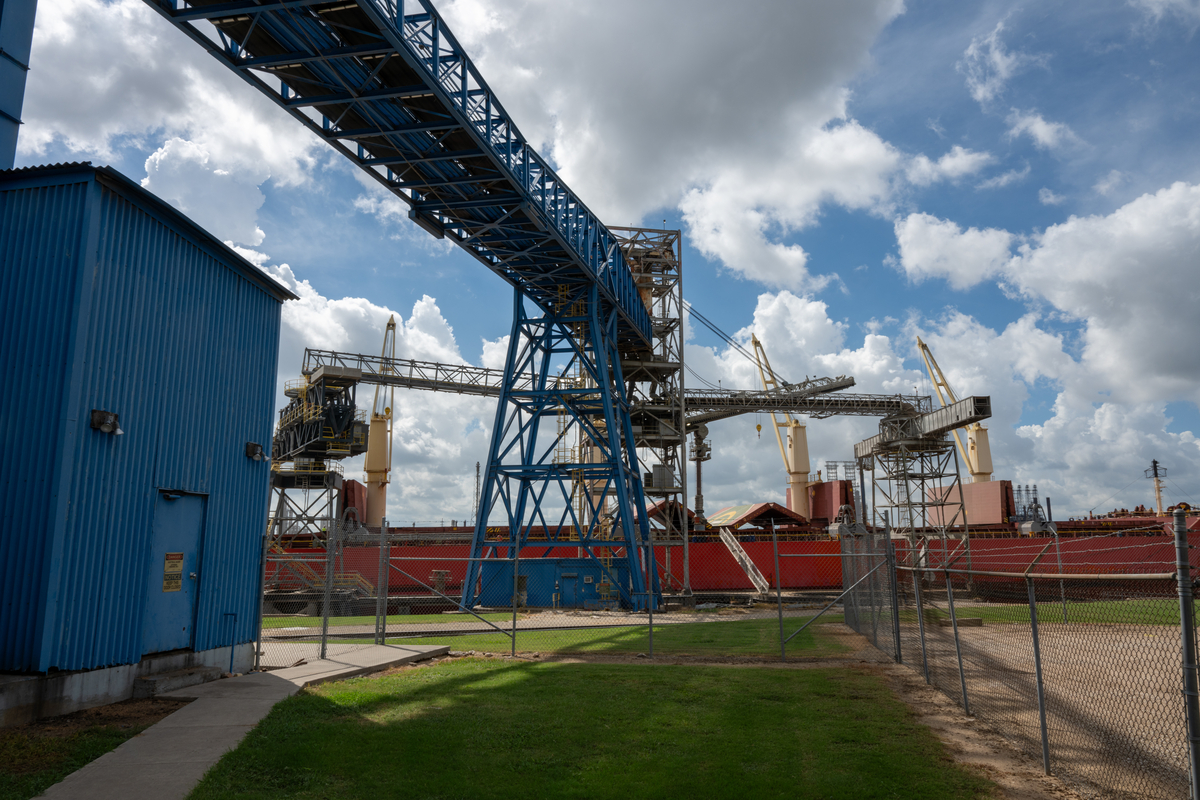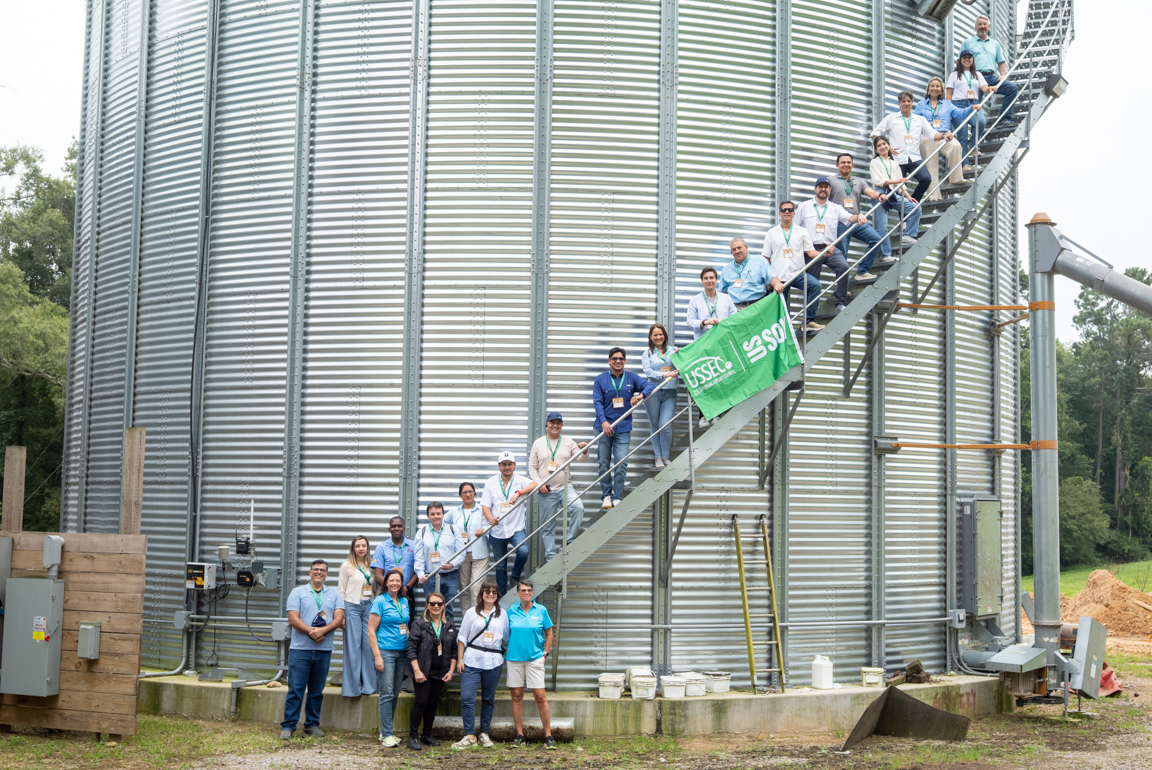New and Emerging Markets: Where Your Soy Can Go After the Field

From the sweeping savannahs of the southern regions of Africa to the towering mountains of Pakistan and the winding rivers of Bangladesh, and to the sandy dunes of Egypt, soybeans may not be what everyone expects on these horizons. And yet, the demand for soybeans is expanding.
Worldwide production of soybeans has grown at a compound annual growth rate of 4.68% since 1961, according to farmdoc, a project by the University of Illinois. Africa’s production growth mostly results from an increase in soybean acres planted, with South Africa, Nigeria and Zambia leading soybean production on the African continent.
The average annual soybean production in Africa is 4 million bushels, which is about half the bushel amount produced by Delaware, according to Soy Stats. Production is below 1 million bushels per year for most countries on the continent. While more acres are being planted in some areas, not all regions are suited to soybean production, presenting an opportunity for U.S. soy to meet the continent’s protein needs.
Feeding a Growing Population
The population of sub-Saharan Africa, the region south of the Sahara Desert, currently exceeds 1 billion people and is predicted to double by 2050, according to the United Nations. The growing population also means a growing need for protein. According to the U.S. Soybean Export Council, this demand growth makes the region one of the most attractive frontier markets for soybeans, which contribute protein to food and feed. To support this emerging soybean market, USSEC hosted its first African Trade Exchange virtual conference in early November.
“Latest figures by USDA, gathered before the pandemic, showed nearly 60% of a Nigerian’s household income went to food. Even more significant — most of that was carbohydrates, leaving a huge protein deficiency,” said Kevin Roepke, USSEC regional director of South Asia and Sub-Saharan Africa.
Roepke said soybeans are uniquely positioned to help many countries develop expanded protein offerings. USSEC, supported by the soy checkoff and other soy partner organizations, works around the globe to bolster demand for U.S. soybeans.
“Within sub-Saharan Africa, soybeans provide affordable and high-quality protein in their diets, either in the form of direct consumption or via poultry and meat,” he said.
Africa’s growing population and urbanization contribute to its up-and-coming market status. As expansion in the region continues, consumer preferences and purchasing habits begin to shift.
“Lower-income countries tend to spend a lot more of their income on food,” said Andrew Muhammad, Ph.D., professor and Blasingame Chair of Excellence in agricultural policy at the University of Tennessee Institute of Agriculture. “As incomes rise in the developing world, diets transition from staples to animal protein.”
Over the next five years, shifting incomes and consumer preferences are expected to increase demand in the region for livestock products, including dairy, beef, poultry, pork, mutton and eggs. This shift would drive an upward trend in meat production.
With this projected production increase comes an increase in livestock feed demand, an area of interest for U.S. Soy.
Sub-Saharan Africa is the sixth-largest destination of U.S. feed and grain exports, with Nigeria receiving the largest amount within the region, according to U.S. Soy.
“Nigeria is already one of the largest importers of U.S. wheat, and we feel the symbiotic relationship between U.S. Soy and the rest of sub-Saharan Africa could pay dividends for both parties for many years to come,” said Roepke. “USSEC members engaged in sub-Saharan Africa now will be well-positioned to serve that market’s needs in the future.”
Emerging Markets in Asia and the Middle East
Africa isn’t the only emerging market for U.S. soybeans. South Asia is also on the rise.
Bangladesh imports 0.45 million metric tons of U.S. soybeans for meal and 1.1 MMT of whole beans, resulting in 31% market share and 85% market share respectively in South Asia, according to USSEC.
Pakistan imported 630,203 metric tons of U.S. soybeans in the 2016-17 marketing year, accounting for a 32% share from a total of 1.69 MMT of imported soybeans. In the 2019-20 marketing year, Pakistan imported over 2.5 MMT of U.S. soybeans, according to USSEC, providing another emerging market for U.S. soybeans.
In early 2020, soy checkoff farmer-leader Lance Rezac traveled to Bangladesh and Pakistan on an investment mission.
“In Bangladesh, we were riding a bus, about the only motor vehicle on the road, surrounded by people pedaling bicycles and washing clothes in the river,” Rezac said. “But then you get to this state-of-the-art soybean crushing facility that can crush 200,000 bushels a day.”
Rezac said he was in awe to see technology from around the world used to process U.S. soy over 8,000 miles away from his soybean fields in Kansas.
“For an under-resourced country to just take and adopt technology that fast to put up a crush plant like that, it was amazing to see,” he said.
And Rezac has watched it happen before.
“With emerging soybean markets, it’s really impressive to see how relatively fast some of these markets come along,” he said. “Egypt comes to mind immediately.”
According to USSEC, Egypt is 50% ahead of last year’s U.S. soybean purchases at over 67 million bushels. Egypt is also the third-largest global export market for U.S. soybeans, and more than 70% of its soybean imports have come from the U.S. for the past several years.
“Demographics, urbanization, consumption trends and economics all play a role,” added Roepke. “But when it comes down to it, the advancement of global food security predicates a presence for U.S. Soy and U.S. soybean farmers.”



